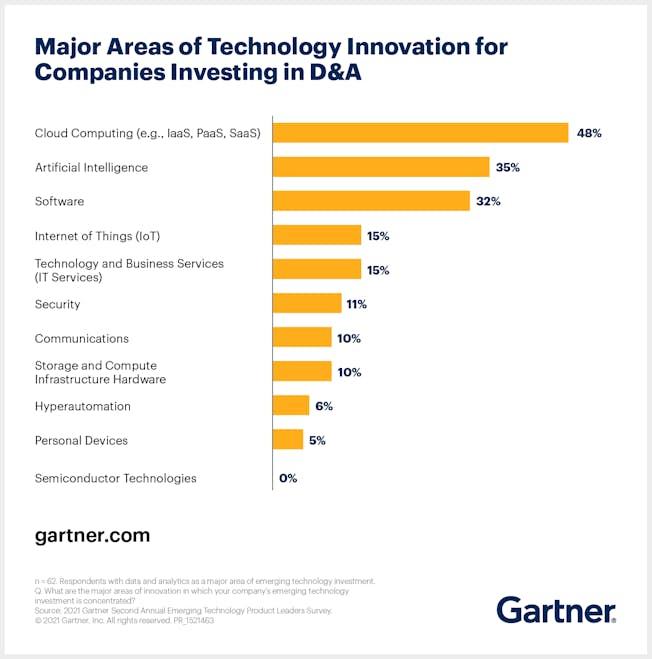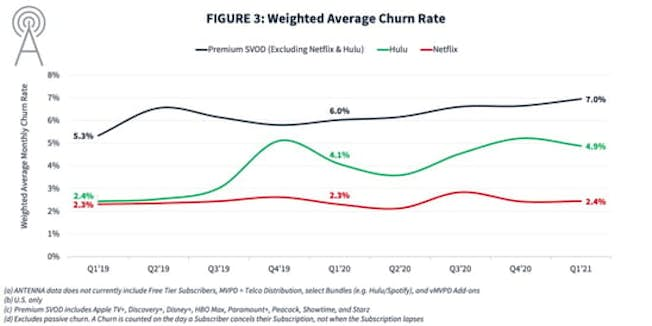It is no secret that data analytics can be valuable for companies of all shapes and sizes. It helps marketers map out seamless customer journeys and tailor content to match intent.
However, from predicting future purchases to customer churn, more than 4 out of 5 marketing executives report difficulty in making data-driven decisions despite access to consumer data according to Venture Beat.
The challenge is gaining access to technologies capable of analyzing an abundance of data in a short duration. While many companies can record large quantities of data, they are unable to process and analyze that information effectively.
So, what can organizations do to use data analytics to achieve better insights that help you get to know your customers better and drive sales?
What Can Big Data Achieve?
The key to using big data is understanding what it can help your business achieve. While big data is frequently associated with marketing and e-commerce, it’s a mistake to believe that data is restricted to just those sectors.
Businesses across industries can benefit from data with proper analysis enabling a company to stand out from the competition. Such practices may also detect potential errors before they occur or prevent fraud, particularly in the pharma or finance sectors.
For e-commerce companies—such as Amazon— the strategy is to use data to their advantage. By evaluating the browsing behavior of their users, these companies better understand the needs and habits of their shoppers.
This information then helps businesses maximize their profits. It also enables the company to promote products online that specific users will be more likely to order and purchase.
What Do You Need to Understand About Data?
Before a company begins to collect large amounts of data, it is important to formulate a long-term plan and goal. Storing data can be costly and analyzing the information even more so.
Therefore, it is important to identify your company’s goals for the data ahead of time (use this target and KPI toolkit to help you do this). Ask questions such as
- What data sources do you currently have and how are you currently using data?
- What data do you have and want access to?
- What do you wish to get from your data? For example, do you want to learn more about your clients, or are you taking precautionary measures to prevent fraud?
- Do you have business objectives in place and do they match your big data strategy?
Once you have established the purpose of your data, you should create a roadmap that shows the gaps in your business and technology needs. These six steps should help you use data to drive the needs of your business.
1. Data Collection
Figure out how your business intends to collect consumer data. The possibilities are nearly endless.
There are several channels for data collection which include:
- Social media networks such as Facebook and Twitter
- Search engine data e.g. Google Analytics
- Surveys
- Transactional tracking (e.g. past purchases)
- Lead generation forms
- Sign-ups or free trials
- Online or website tracking
- Customer journey or user observation
Keep in mind there are different types of data from first-party (consensual data such as an email address) to third-party data (cookies from external websites being phased out by Google in 2024).
2. Evaluate Data Relevance & Accuracy
Next, you need to determine the true value of your data. How was the information collected? Information that has been compiled haphazardly may be inaccurate, full of flaws, and worthless.
‘The State of B2B Sales 2022’ found that two-thirds of sales leads don’t close because of bad data quality while up to 25 percent of companies’ client and prospect records contain critical data errors that directly affect sales.
So, you must analyze the accuracy of your information before spending time and money to analyze the data in the first place. This will help you determine whether the data will contain any valuable insights. If it doesn’t, collect the data more accurately before moving forward.
3. Gain Better Insights
The majority of modern companies already store a sufficient amount of data regularly. To gain better insights some questions need to be addressed first:
- How much do you know about your company’s data and collection processes?
- How frequently is the information updated and where is it stored?
- Is the information analyzed regularly?
- Are there any security or confidentiality concerns regarding the stored information?
Gaining answers to these questions will give you an advantage and ensure you better understand your company’s current practices – including compliance with local and international laws such as GDPR. Also, be sure to consult with the team or individual who is responsible for analyzing your company’s data.
4. In-House Capabilities
Believe it or not, storing and analyzing big data can be a huge and expensive process. Great skill and experience are needed to effectively scour through the information and utilize the associated software.
According to the U.S. Bureau of Labor Statistics, the demand for operations research analysts is projected to grow 23 percent from 2021 to 2031, much faster than the average for all occupations. This means that competition for these skills is high.
At the same time, many companies are unable to maintain and manage their in-house talent. While it may seem like a good idea to dedicate resources solely to data analytics programs, this might ultimately prove to be a costly mistake.
To get the most out of your data, it is important to correlate data analytics and IT technologies. Avoid compartmentalizing! Instead, try to expand your resources across both sectors. Investments in IT infrastructure should coincide with data analytics technologies and vice versa.
This graph from Gartner shows the main areas of technology innovation for companies investing in data and analytics. Cloud technology accounts for nearly half of investment followed by AI and software.

5. Data Visualization
Once you have learned how to collect accurate data, it is time to carve out insights from the information. Data visualization is a key aspect of this process as it gives you the ability to represent the information in a way that’s more understandable.
In all likelihood, your team will have a few people who are uncomfortable with numbers. To make sure your data is utilized efficiently, you need to display the information visually.
The use of certain tools such as Google Charts or Datawrapper makes it possible to transform data into graphs and charts. Charts are easily understandable and will help ensure your team is involved and engaged.
Read our ‘Data Visualization: Tools and Tips for Marketers’ for more information.
6. Turn Insights into Actions
Having access to big data and being able to analyze it is not useful unless you can translate it into successful actions.
Getting the tools necessary to analyze data is simply one step in the right direction. Whether the end goal is to increase security or drive profits, you should figure out how to transform the knowledge to drive business insights.
The CEO and senior executive team should be willing to use these business analytics for marketing activities. . Customer insights should be incorporated into every decision-making step at all levels. Whether it’s establishing a new advertising strategy or strategizing elsewhere. Learn how to leverage this information to improve and grow your business.
Case Studies: Netflix & Walmart
Netflix
You will probably have heard of Netflix, its unstoppable success as the go-to streaming service sees it have 223 million paid subscribers reported by Statista.
One of the reasons is how Netflix uses big data. By understanding customer needs, the company has one of the lowest churn rates for subscription services compared to others like Hulu at just 2.4 percent.

Netflix uses big data to analyze user behavior and then tailors it to that with personalized content. For example, they collect data such as the time during which their subscribers watch the show if it was binge-watched or took them some time to finish.
In 2019, Netflix invested in AI technology to automate movie and television trailers. This technology could help the company lower the cost of creating trailers while adding personalization for its subscribers.
Walmart
Another example is mega-retailer, Walmart. With over 245 million customers across the globe in nearly 20,000 stores, Walmart collects 2.45 terabytes of unstructured data from a million customers every hour according to ProjectPro!
It uses this data in a variety of ways to improve customer service, acquire and retain customers and drive revenue. In its PPC strategy, Walmart analyzes 100 million keywords every day to optimize bidding. It also tracks every action such as social media activity, in-store and online purchases, and local events to tap into.
The graphic below from Harvard shows examples of how the superstore uses data to be customer-centric but also focuses on improving operations and processes.

Leverage Data Analytics for Business Success
It can be a challenge to understand what data to collect and how to use it to engage customers and drive revenue. DMI’s short data and web analytics course will introduce you to the fundamentals including GA4 and dig into data security and compliance and how to visualize and present data. Get started today to leverage your data.
Related
- Categories:
- Articles
- Data and Analytics
Upgrade to Power Membership to continue
your access to thousands of articles, toolkits, podcasts, lessons and much much more.
Become a Power Member- Login
- View Courses
- - - -
- Courses
- Resources
- - - -
- My Account
- Change Password
- Logout




